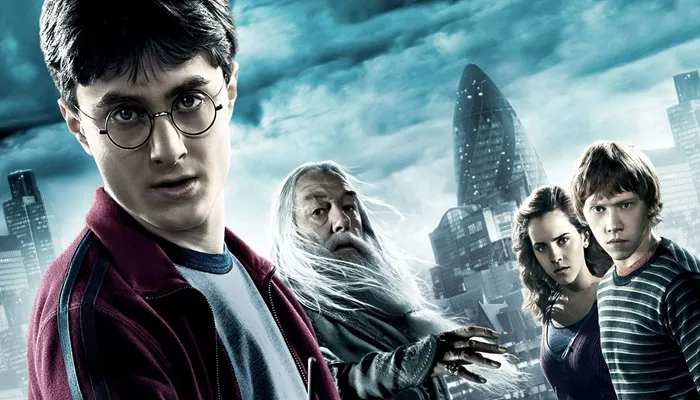The “Harry Potter” series, authored by J.K. Rowling, has captivated readers worldwide since its debut in 1997. At its core, this series is a quintessential example of fantasy literature. But what exactly defines a fantasy book, and how does “Harry Potter” embody these characteristics? This article delves into the elements that classify “Harry Potter” as a fantasy series, exploring its magical setting, supernatural beings, and the timeless themes that resonate with readers of all ages.
Understanding Fantasy Literature
Defining Fantasy
Fantasy literature is a genre that transports readers to worlds filled with magic, mythical creatures, and adventures beyond the ordinary. According to Britannica, fantasy is “imaginative fiction dependent for effect on strangeness of setting… and of characters… supernatural or unnatural beings.”
This genre allows authors to create alternate realities where the laws of nature can be bent or entirely reimagined, providing readers with an escape from the mundane.
Key Characteristics of Fantasy
Magical Realms and Settings: Fantasy stories often unfold in imaginary worlds that operate under unique rules. These settings are distinct from the real world, offering readers a sense of wonder and exploration.
Magic and Supernatural Elements: Central to fantasy are magical systems and supernatural beings. These elements are integral to the plot and character development, distinguishing fantasy from other genres.
Epic Quests and Adventures: Many fantasy narratives revolve around quests or adventures that challenge characters, promote personal growth, and often involve saving the world or discovering one’s destiny.
Mythical Creatures and Beings: Dragons, elves, wizards, and other mythical entities populate fantasy worlds, enriching the narrative and adding layers of complexity to the story.
The Magical World of Harry Potter
Setting: Hogwarts and Beyond
The “Harry Potter” series is set in a meticulously crafted world where magic is a natural part of life. The primary setting, Hogwarts School of Witchcraft and Wizardry, is a magical castle with moving staircases, enchanted portraits, and hidden chambers. This school serves as a backdrop for much of the series, providing a rich environment for magical education and adventures.
Beyond Hogwarts, the wizarding world includes various magical locations such as Diagon Alley, the Forbidden Forest, and the Ministry of Magic. These settings are integral to the plot, each offering unique challenges and experiences for the characters.
Magic and Supernatural Elements
Magic is the lifeblood of the “Harry Potter” universe. Wizards and witches use wands to cast spells, brew potions, and perform various magical feats. The series introduces a diverse range of magical creatures, including house-elves, hippogriffs, and dragons, each adding depth and excitement to the story.
The magical system in “Harry Potter” is governed by its own set of rules and limitations, providing a structured yet imaginative framework that enhances the believability of the fantasy world.
Plot: Quests, Challenges, and Growth
At its core, the series follows Harry Potter’s journey from a young, inexperienced wizard to a hero who confronts dark forces threatening the magical and non-magical worlds. Each book presents a new challenge, often culminating in a quest that tests the characters’ courage, loyalty, and moral convictions.
These adventures are not just about external battles but also about personal growth. Harry and his friends, Hermione Granger and Ron Weasley, navigate the complexities of adolescence, friendship, and identity, making their journey relatable to readers beyond the fantasy elements.
Themes: Good vs. Evil, Friendship, and Sacrifice
“Harry Potter” delves into timeless themes such as the battle between good and evil, the importance of friendship, and the value of sacrifice. The characters’ struggles with these themes mirror real-life challenges, allowing readers to find meaning and connection within the fantasy narrative.
The series also addresses issues like prejudice, corruption, and the abuse of power, providing a nuanced exploration of societal issues through the lens of fantasy. This depth adds layers of meaning, encouraging readers to reflect on their own world while being immersed in a magical one.
Literary Recognition and Impact
The “Harry Potter” series has received widespread acclaim for its contribution to literature. It has been praised for its imaginative storytelling, complex characters, and the seamless blending of fantasy with real-world issues. The series has won numerous awards and continues to be a subject of academic study and discussion.
Beyond the books, “Harry Potter” has inspired films, plays, theme parks, and a vast array of merchandise, solidifying its status as a cultural phenomenon. Its impact extends to fostering a love for reading among young people and sparking discussions about its themes and characters.
Conclusion
In essence, “Harry Potter” is a fantasy series that masterfully incorporates the genre’s defining elements—magical settings, supernatural beings, epic quests, and profound themes. J.K. Rowling’s creation offers readers an immersive experience that transcends age and cultural boundaries, reaffirming the enduring appeal of fantasy literature. The series not only provides an escape into a world of wonder but also offers insights into the human condition, making it a cornerstone of modern fantasy storytelling.

